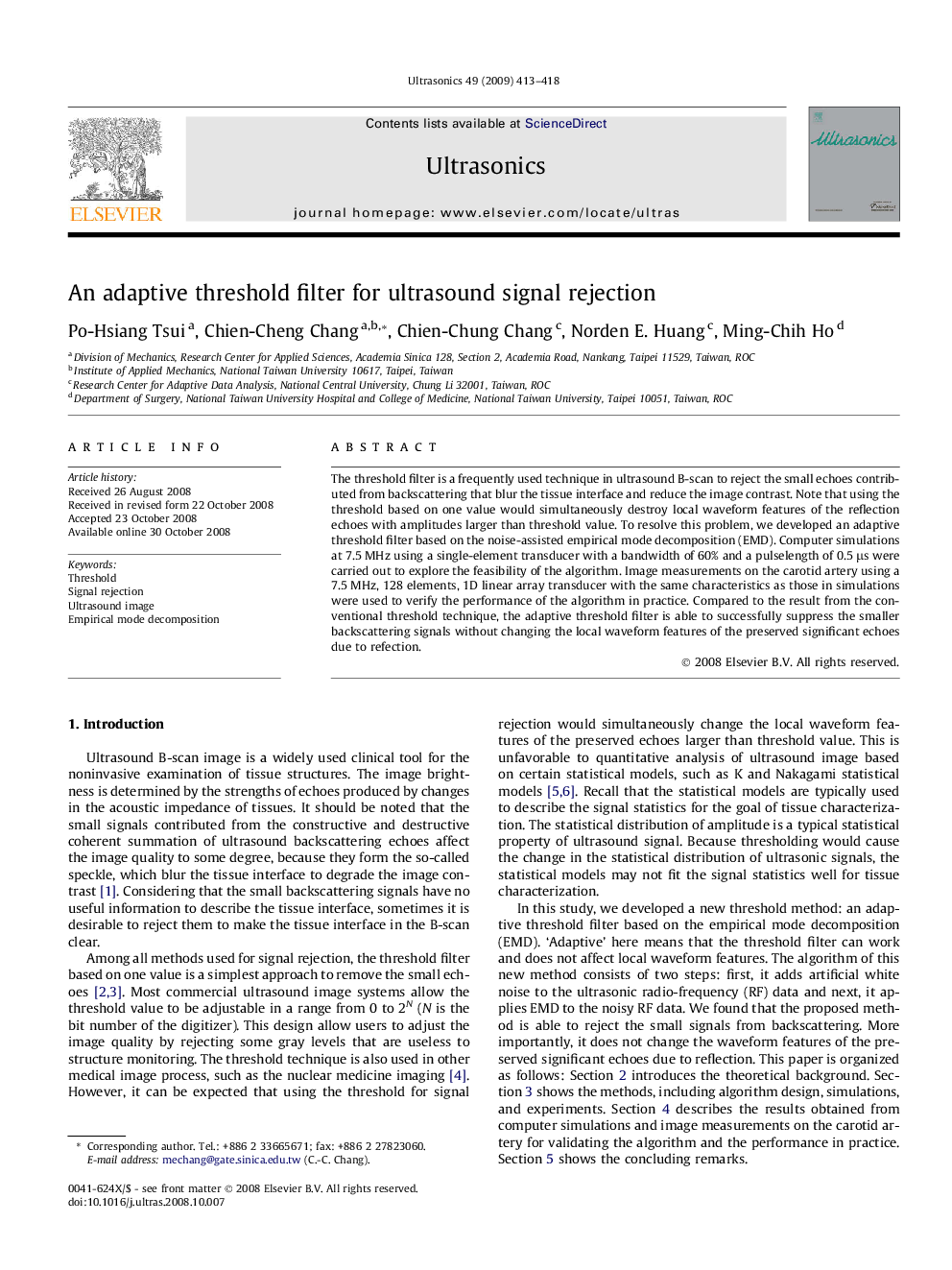| Article ID | Journal | Published Year | Pages | File Type |
|---|---|---|---|---|
| 1760004 | Ultrasonics | 2009 | 6 Pages |
The threshold filter is a frequently used technique in ultrasound B-scan to reject the small echoes contributed from backscattering that blur the tissue interface and reduce the image contrast. Note that using the threshold based on one value would simultaneously destroy local waveform features of the reflection echoes with amplitudes larger than threshold value. To resolve this problem, we developed an adaptive threshold filter based on the noise-assisted empirical mode decomposition (EMD). Computer simulations at 7.5 MHz using a single-element transducer with a bandwidth of 60% and a pulselength of 0.5 μs were carried out to explore the feasibility of the algorithm. Image measurements on the carotid artery using a 7.5 MHz, 128 elements, 1D linear array transducer with the same characteristics as those in simulations were used to verify the performance of the algorithm in practice. Compared to the result from the conventional threshold technique, the adaptive threshold filter is able to successfully suppress the smaller backscattering signals without changing the local waveform features of the preserved significant echoes due to refection.
